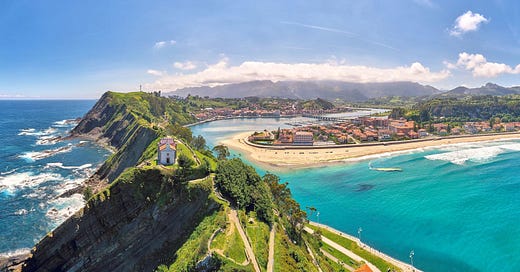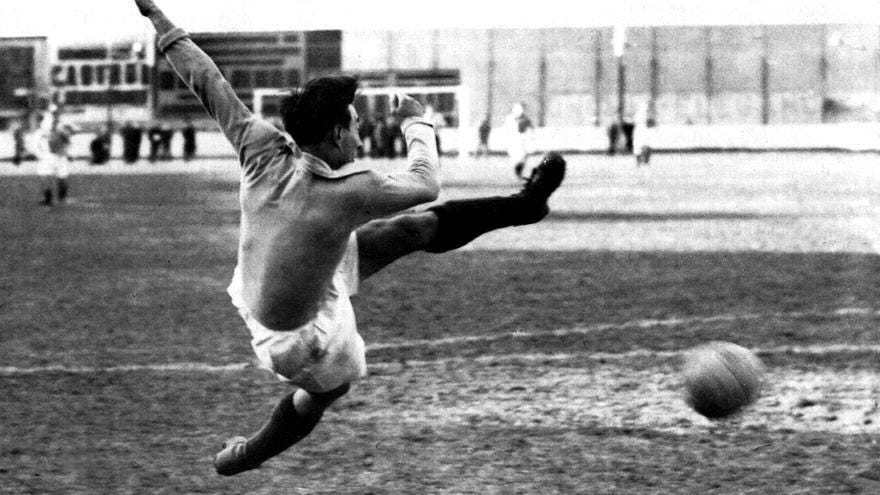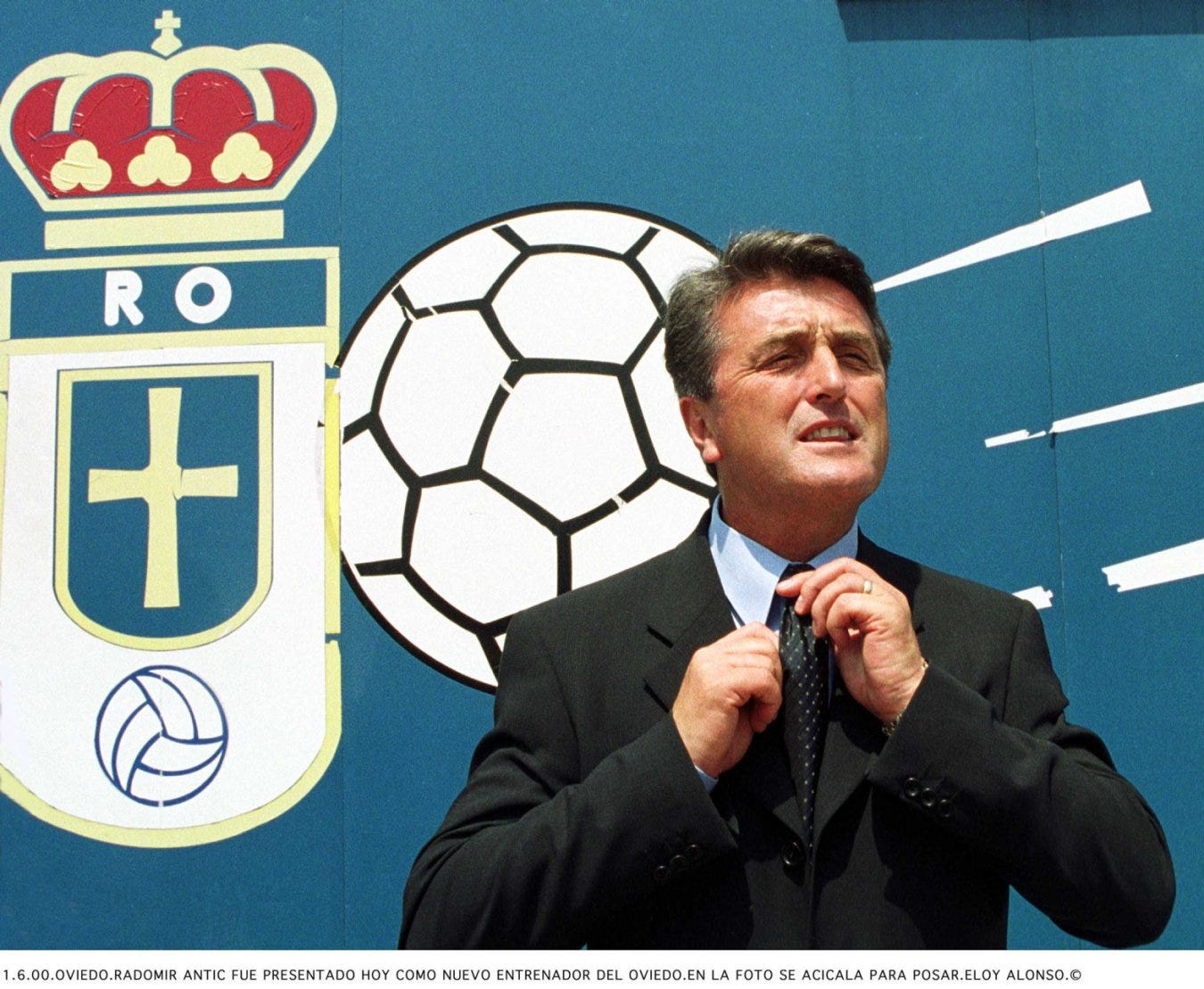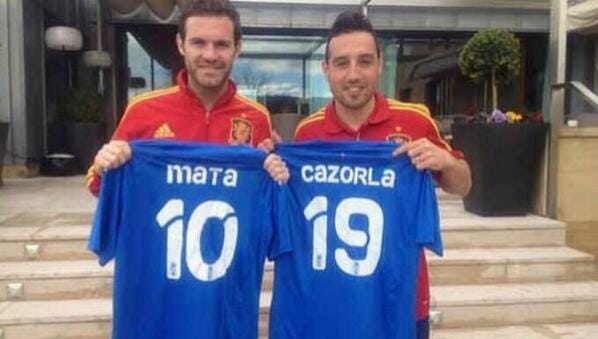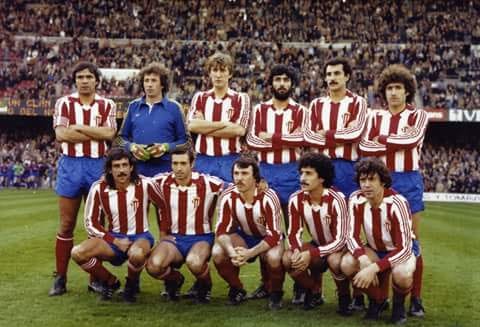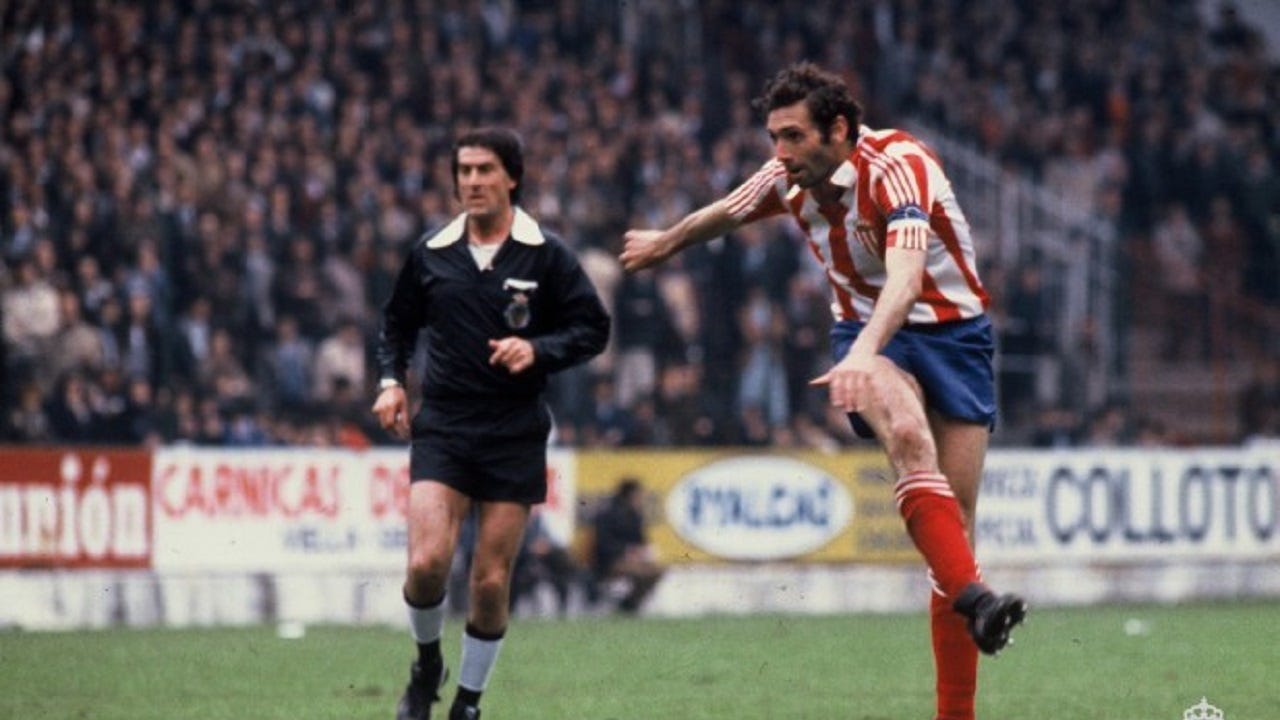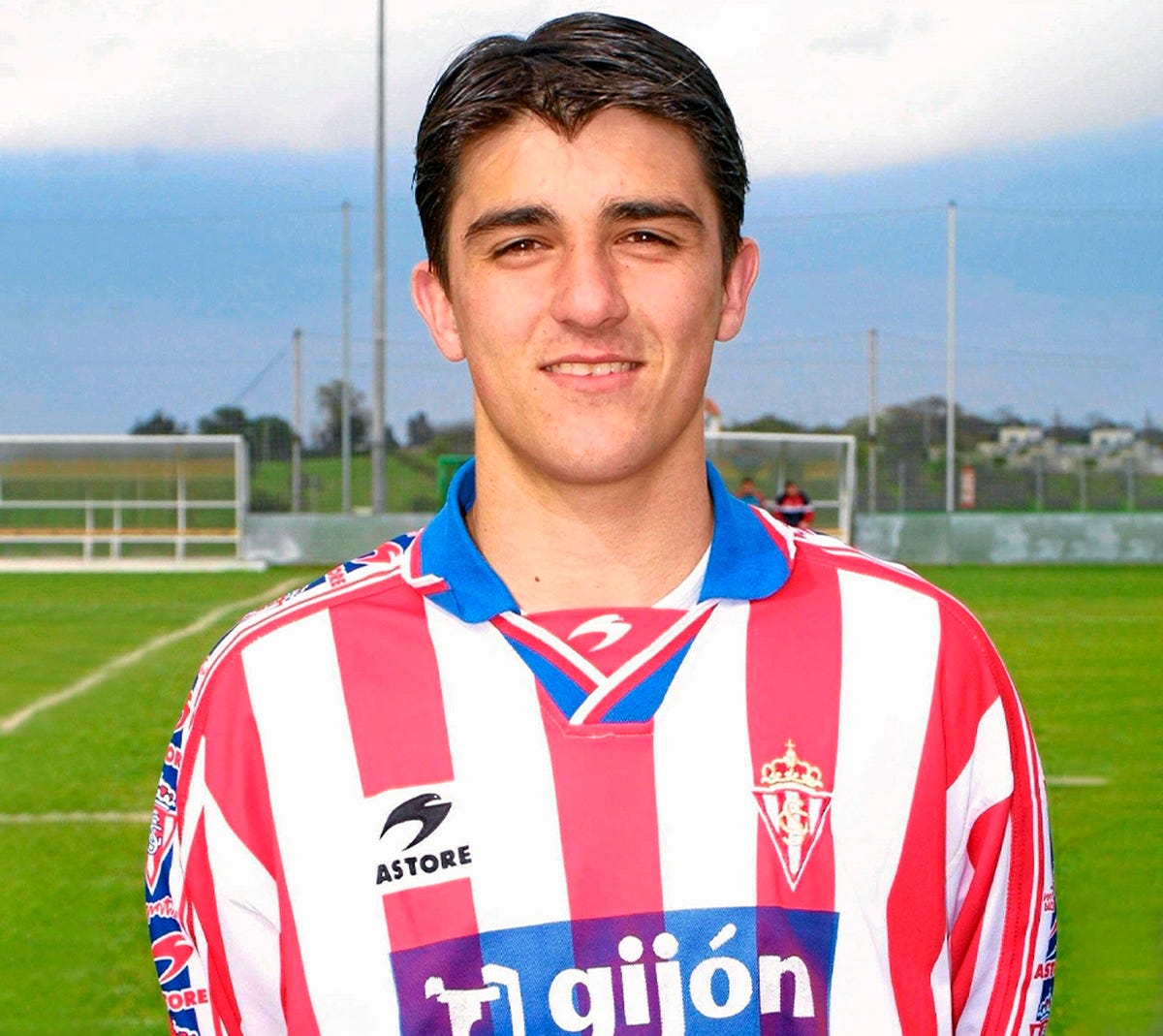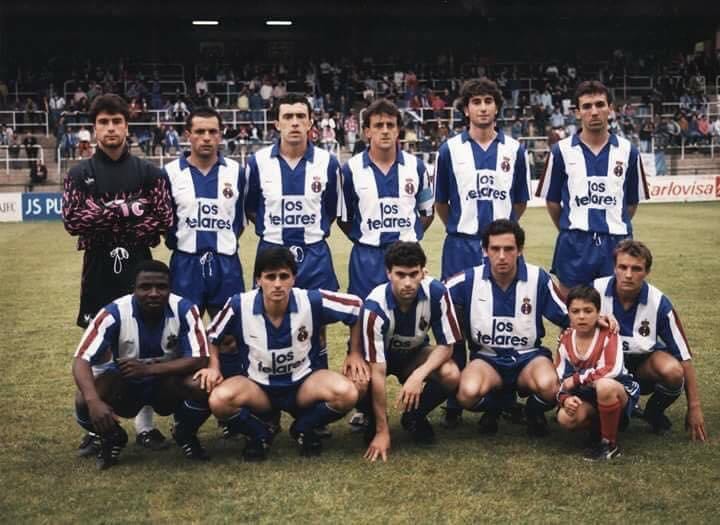State of play: Regions of Spain, Asturias
Spain is made up of 17 unique and autonomous regions. Regional pride is often bigger than national pride in what can feel a fractured and divided country, this time we look at Asturias.
What strikes you the most when you head to Asturias is how green it is. Similar to Cantabria which it borders to the east in its mix of lush greenery, mountains and rugged coastline.
To the West is the Celtic region of Galicia and to the South is Castile & León. People have often compared Asturias to Wales and their is some truth in that although as a Welshman I have always felt we're more similar to the Basque Country.
Asturias has a history as an industrial area with coal mining dominating the region which again brings the region similarities to Wales.
Many will know the region for the unique way they pour cider from a large height above the pourers head and into the glass without spilling a drop.
Asturias has gained prominence internationally over it's reputation for fighting back, when Napoleon and the French took the Spanish crown the first region to rise up and declare war was Asturias and in 1934 Asturian miners rose up against members of the right wing joining the centralist government in the years leading up to the civil war.
The military officer sent to brutally repress this uprising was General Franco a then little known general who used tactics usually seen only in the colonies, in Asturias to crush the rebellion.
The region was again at the heart of resistance during the civil war and Franco didn't forget with the regions name removed until his death and known as the province of Oviedo.
While internationally it's reputation as an area of resistance has brought it to the worlds attention the football teams of the region also have this streak of defiance in it.
Los Azules
Real Oviedo are the capital club, while much of Asturias is industrial, Oviedo is a service economy and many including those from the largest city of Gijon take glee out of relaying this information but more on that later.
Real Oviedo was born out of a merger of two teams in the city in 1926, just three years before the start of La Liga.
When La Liga started Real Oviedo were placed in Segunda and finished 7th out of 10 teams.
After just five seasons Los Azules made it to La Liga and they made an instant impact with their attacking stylefinishing 3rd in their second and third seasons. Powered by the goals of Isidro Langara who took the Pichichi for top goalscorer three times in a row during this period. The team were renowned for their one touch play and pace with their attacking quartet known as Delanteras Electriacas or the electric forwards.
Any hope of kicking on from those lofty heights was ended with the civil war and when football resumed after the war, Real Oviedo were a mid-table side with their stars having either left the country or signed for teams such as Barca.
The Asturian side spent most of the next four decades bouncing between La Liga and Segunda until a shock in 1978 when they fell out of professional football for the first time in their history.
That season in the third tier lasted just one season, they would though spend the next 9 seasons in Segunda.
In the build up to the 1982 World Cup the aging Carlos Tartiere was renovated and brought up to modern standards with both major Asturian cities hosting matches.
When Real Oviedo finally returned to La Liga in 1988 they established themselves quickly in the league. in 1991 they made Europe for the first time although they were knocked out of the UEFA Cup in the first round by Genoa.
The club successfully tapped into the European market and were able to bring in a number of Yugoslav players such as Slavisa Jokanovic, Janko Jankovic, Nikola Jerkan, Veljko Paunovic and Robert Prosinecki from Real Madrid.
Those players mixed with a Spanish core and good coaches during the period of Javier Irureta and Radomir Antic gave the club some of their best times.
The departure of Antic in 1995 for Atleti saw the club move from a top half side to a side sliding towards the relegation battle.
Two big decisions in the golden period of the club would also come back to haunt them, in 1992 the club became a PLC with the mandate for all clubs bar Athletic Club, Osasuna, Real Madrid and Barca to become limited companies.
The second was the UEFA regulation that all football stadiums must be all seaters that was passed in 1993 with a five year grace period to comply. The Carlos Tartiere would go down to just 16,500 and a new ground was needed.
While the club and council agreed on a new site across the city, on the pitch the club was fighting to stay in the top flight, in 97-98 they beat Las Palmas in the relegation play-off.
1999-2000 saw the club leave the old Carlos Tartiere and move across the city to the new Carlos Tartiere.
The new home didn’t bring good memories though with the club finally falling through the trapdoor. While they’d been battling against it for years what hurt this season was the club only fell into the relegation places during the final game of the season away to Mallorca coached by their own former coach Luis Aragones.
Radomir Antic had returned this season but the popular coach wasn’t able to save them. Having spent big sums over the years the club was in bad health financially as they plunged into Segunda.
In a competitive second tier with teams such as Atletico Madrid with Fernando Torres leading the line, Racing Santander, Recreativo Huelva and eternal rivals Sporting Gijon all in the league, Los Azules finished 7th.
Any hopes of a quick return to La Liga were dashed the following season when the team suffered a double relegation. With the financial situation worsening the club finished second bottom. The players hadn’t been paid and sued the club for non-payment, while the board and players agreed on the amount owed the lack of detail on guarantees of paying this money saw the club administratively relegated to the fourth tier.
The club had gone from La Liga establishment to the fourth tier in just three seasons. With the finances in such a precarious place plans were drawn up to continue football in the city if and when the club went out of business.
The council controversially got behind a new club Oviedo ACF which was formed on the back of Astur a provincial team and given a badge and kit similar to Real Oviedo as well as trying to evict Real Oviedo from the Carlos Tartiere.
Those relegations also saw huge impact at the clubs academy with players such as Santi Cazorla being forced to leave.
A record for attendance was set in the fourth tier when Real Oviedo hosted Oviedo AC with over 16,000 in attendance but the club despite winning their regional league fell in the play-offs to remain in tier four.
The next decade was spent surviving season to season and the club floating between the third and fourth tier.
In 2012 the clubs finances again reached a disastrous state and a campaign was set up for fans to buy shares, the club got backing from Oviedo fans Santi Cazorla, Juan Mata, Michu, Adrian and Sid Lowe who all bought shares and it suddenly became an international campaign.
The club was saved and the worlds richest person at the time Carlos Slim also bought shares to become the majority shareholder.
On the pitch though the club still spent three seasons in the notoriously difficult third tier before finally returning to Segunda in 2015.
Slowly the club established itself in the second tier and in 23/24 with Santi Cazorla returning to Oviedo they reached the play-offs for La Liga for the first time since being relegated in 2001. They defeated Eibar but fell in the second leg of the final to Espanyol.
They bounced back in 24/25 finishing 3rd and after beating Almeria they defeated Mirandes to complete their return. The scenes in the city were of 24 years of pain unleashed and tears of joy and exuberance were everywhere.
Now the work begins for the Asturian side to once again establish themselves in La Liga.
The biggest city
While Oviedo is the capital of the region the biggest city with the highest population is Gijon. Where Oviedo is seen as a service city, Gijon is the industrial heart of Asturias. That’s not to say it isn’t a looker though, the city is on the coast and a real beauty.
As years have gone by the city has lost it’s steel and naval industries and has become itself more commercial although the narrative of the industrial v service city still remains.
In football Gijon has Sporting Gijon, one of only nine teams to have never been relegated out of the top two tiers in Spanish football.
The story of Sporting Gijon is not as dramatic as Real Oviedo’s but it’s equally as fascinating.
While Sporting were established first out of the two they were the second team to make La Liga and most of their early history was spent in Segunda.
A decisive season in 1976-77 saw the power pendulum in the region swing to Sporting. With both teams fighting for promotion as they met at the Carlos Tartiere in the second to last match of the season, Sporting won and promotion would fall to them not Real Oviedo and clinched at the home of their bitter rivals.
Sporting returned to La Liga with a bang going eight undefeated and would finish 5th. The club was led by talismanic striker Quini. Even better was to come the following season when Quini scored 23 and Sporting finished 2nd.
That saw them qualify for the UEFA Cup the first Asturian side to compete in Europe.
Quini was born in Oviedo but came through at Sporting and scored over 170 goals for the Asturian side helping to cement their dominance of the region in the 70s and 80s. The striker would later move on to Barcelona and famously be kidnapped during the season which ultimately cost the Catalan side the title.
During this golden period the club made two Copa del Rey finals and qualified six times for the UEFA Cup. They were producing players such as Gijon born Luis Enrique, Abelardo and many others.
With rivals Real Oviedo joining Sporting in the top flight in 1988 we had ten years of the Asturian derbi being played in La Liga without interruption and both sides thrived.
Sporting though after 21 seasons fell out of the top flight in 1998 and it took 10 seasons to return. In that time the cantera continued to deliver with David Villa scoring 41 goals after his promotion to the first team in just 85 games.
The Asturians spent four seasons on their return but finished no higher than 10th and the European days felt a long way off. They were relegated in 2012 and despite returning in 2016 only lasted two seasons with the club unable to compete financially anymore.
Since then the club has flirted with the unthinkable and relegation to the third tier in recent seasons. A rare season of finishing in the play-offs in 23/24 where they missed out on an all Asturian final was followed up by another flirtation with relegation before stabilising after firing Ruben Albes.
The club now feels a long way off La Liga, their reputation though is still as a historic club with a proud history and they are still one of a few clubs who take huge numbers of away support up and down Spain. The cantera continues to deliver players of first team level with the squad still having a core of Asturian players.
Derbi Asturiano
While some regions such as the Basque country unite and the derbi is played out in a friendly nature with fans mixing, this isn’t the case in Asturias.
The derbi is one of the most intense in Spanish football alongside the Seville Derbi. Real Oviedo fans would often have to wear mining helmets as they travelled on the train to games with projectiles from Sporting fans hitting the train as they travelled across Asturias and into Gijon.
With many rivalries this one is born from the idea of what the two cities represent and the otherness seen in their rivals, their has at times been floated the idea of merging the sides to create one Asturian team, the two presidents even met in 2000 to discuss the plan and building a ground halfway between the two cities to unite but thankfully it never took off.
The two teams have traded places when it comes to supremacy during the decades and the derbi went 14 years without being played when Real Oviedo fell out of Segunda. What hurt Real Oviedo more was they ended up the same division as Sporting’s B team.
When the derbi returned in 2017 the intensity remained. Both sides have thriving academies and by coincidence both are now owned by Mexican consortiums, with Real Oviedo now in La Liga the derbi will take a breather and the wait for the derbi to return to La Liga will continue with the last meeting in the top flight between the two in 1998.
Industrial
With so much talk of Asturias and industry it’s only right that the third team in the region is known as Real Aviles Industrial.
Aviles are actually the oldest club in the region having been created two years before Sporting Gijon. The city is based on the coast and as the name suggests and industrial heart.
Aviles is the third city in the region and in this case size does matter with the club the third team in the region.
Real Aviles have spent 13 seasons in Segunda with the most recent coming in 1992 but the clubs place has generally been between the third and fourth tiers.
This season they secured promotion to Primera RFEF after a 10 year absence from the third tier meaning two of the three main clubs in the region gained promotion this season.
Forgotten teams
UP Langreo come from the regions fourth biggest city Langreo. UP Langreo have spent 8 seasons in Segunda with their glory days in the division in the 60s and early 70s.
Since then the team has found itself floating between the third and fourth tier. Another city with a proud mining history and the club has a very distinctive kit. The club has a rivalry with Real Aviles and Caudal Deportivo.
Caudal Deportivo have also spent time in Segunda but have not played in the second tier since 1958 and currently reside in the fifth tier.
Cantera
With such an industrial background in the region it’s no surprise the academies of the region have been goldmines and produced top class players. Whether it be Quini, Abelardo, Luis Enrique, David Villa, Juan Mata, Santi Cazorla or Michu the list of footballers from the region is almost endless.
The region also has had a big impact on the region through it’s coaches with Luis Enrique winning the Champions League as coach of two different teams as well as managing the national team, Marcelino having success at Athletic, Valencia, Villarreal amongst others. Abelardo also went on to have a reasonable coaching career in La Liga albeit not hitting the heights of his compatriots.
The regions impact on football through it’s players is huge with multiple World Cup, EURO, La Liga, and Champions League winners coming from this region with a population of just over 1 million.
State of Play
With two of the teams in the region gaining promotion on the pitch things look good. To have a representative from the region back in La Liga is also good news for Asturias although those of red and white persuasion might disagree.
After years of producing top class talent though it does look like the current crop aren’t of that standard with no Asturians in the national team currently.
Both of the major clubs are financially stable which after lots of pain is a positive sign. The big questions now are can Real Oviedo re-establish themselves in La Liga while can Sporting make it back into the big time?

